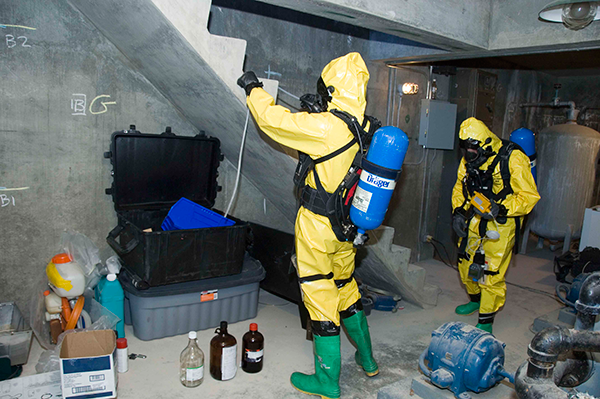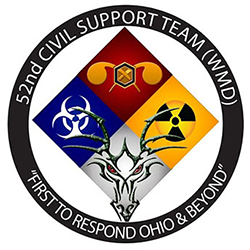Ohio National Guard News
Ohio National Guard's 52nd CST capablities
|
 |
In January 2013, Ohio National Guard 52nd Civil Support Team members participated in a one-day training exercise in Portsmouth that was created and run by the West Virginia National Guard. The exercise — one of more than 20 the Team did last year — was designed to test team members' ability to respond to an unknown chemical, biological, radiological or high-yield explosive incident. To maximize the realism of the exercise, the Ohio National Guard wasn't involved in the creation or execution of the exercise's fictitious scenario and was deliberately not informed of its details in advance. It's not accurate to suggest that certain details of the exercise somehow reflect views or opinions of officials of the Ohio National Guard. |

The Ohio National Guard 52nd Civil Support Team is based in Columbus, Ohio and is comprised of 22 Soldiers and Airmen who are trained to support civilian law enforcement authorities and other first responders at domestic chemical, biological, radiological, nuclear and high-yield explosive (CBRNE) and natural disaster incidents by assessing current and projected consequences, identifying CBRNE agents/substances, advising on response measures and assisting with appropriate requests for state and federal support. The unit’s unofficial logo reflects these capabilities. The inner portion of the logo is divided into four diamond-shaped squares, emulating the National Fire Protection Association’s “hazard diamond,” designed to provide an immediate general sense of the hazards of a material and the severity of these hazards as they relate to emergency response. This was made part of the 52nd CST’s logo to symbolize that each member is HazMat (hazardous materials) technician-certified. Within the diamond, the top image is the symbol for the U.S. Army Chemical Corps; the left image depicts the international symbol for a biological hazard; the right image represents the international symbol for a radiological or nuclear hazard; and the bottom image is a dragon’s head, the Army’s symbolic mascot of the Chemical Corps, originally adopted in the 1940s. Army CBRNE specialists are often called "Dragon Soldiers,” as the dragon symbolizes the fire and destructive power of chemical warfare and munitions. In no way is the logo intended to symbolize anything overtly or secretly related to any religion or faith. It is simply an illustration depicting the unit’s main capabilities through relatively common images and symbols. |